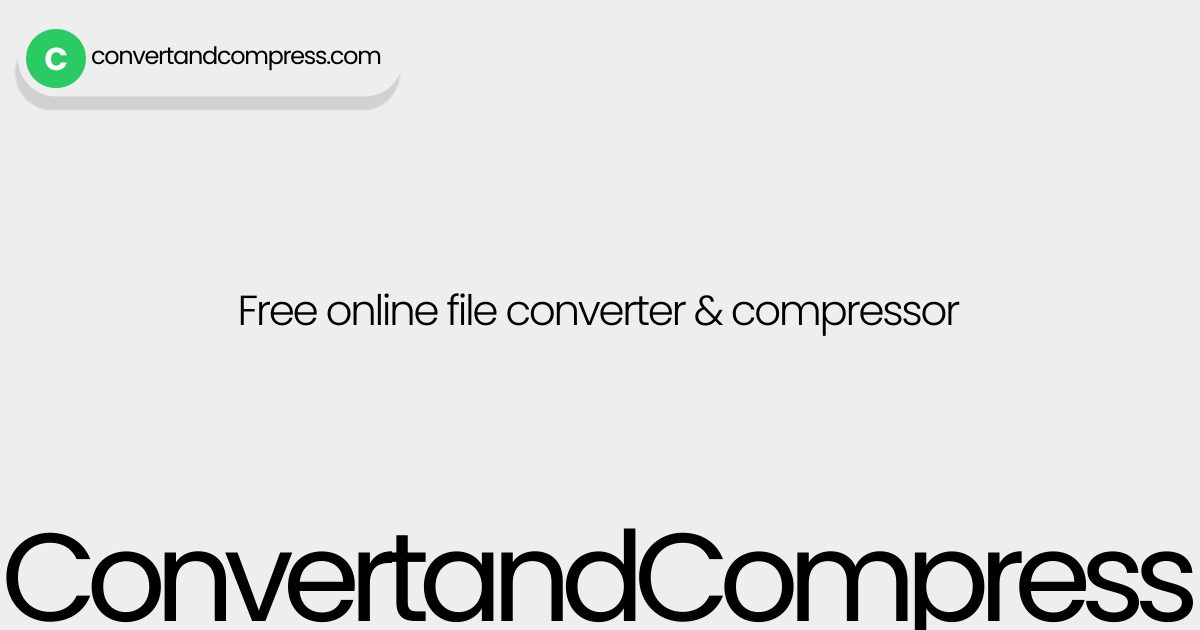JPEG vs. PNG vs. GIF: How to Choose and Convert Image Formats Easily

When it comes to optimizing images for the web, choosing the right format can make a huge difference in terms of file size, quality, and usability. In this post, we'll explore the three most commonly used image formats: JPEG, PNG, and GIF. We'll help you understand their differences and guide you on when to use each format. Plus, we'll show you how to easily convert between these formats for better web performance.
Understanding the Differences: JPEG vs PNG vs GIF
Each image format is unique, offering advantages depending on your use case. Let's dive deeper into the strengths of each format.
JPEG: Perfect for Photographs
JPEG (Joint Photographic Experts Group) is the go-to format for photographs and images with lots of color gradients. It uses lossy compression, meaning some image quality is sacrificed to reduce file size. This makes JPEGs ideal for web usage where smaller file sizes are essential for fast page loading times. Use JPEG when you need high-quality photographs that don't require transparency or crisp edges.
PNG: Great for Graphics and Transparency
PNG (Portable Network Graphics) is a lossless format, which means it retains all image quality. This makes it perfect for images with sharp edges or graphics like logos, icons, and text. PNG also supports transparency, allowing for clean backgrounds. While PNGs tend to have larger file sizes compared to JPEGs, the quality is unbeatable, especially when transparency is needed. Use PNG for graphics, logos, and images that require high detail and transparency.
GIF: Ideal for Animations
GIF (Graphics Interchange Format) is best known for its ability to support animations. It's a lossless format that uses indexed color, which means it's limited to 256 colors. GIFs are perfect for small animations, such as memes, animated icons, or simple graphics. However, GIFs are not ideal for photos or images with complex colors, as they may appear pixelated. Use GIF when you need simple animated graphics or when file size is more important than image detail.
When to Use Each Format
Understanding the right use case for each format is key to optimizing your website and content. Here's a simple guide:
- JPEG: Use for photographs, high-color images, and any content where file size is a priority over absolute image quality.
- PNG: Use for logos, icons, graphics with transparent backgrounds, and any image that requires lossless quality.
- GIF: Use for simple animations, logos with animation, or low-complexity graphics that don't require more than 256 colors.
How to Convert Between JPEG, PNG, and GIF
Converting between these formats is easy and can be done in just a few simple steps using the right tools. Whether you need to switch from JPEG to PNG or vice versa, there are free tools that make the process seamless.
Converting JPEG to PNG
If you have a JPEG image and want to convert it to PNG for better quality or transparency support, you can do so easily with our Image Converter Tool. Simply upload your JPEG image, select PNG as the output format, and download the result in seconds.
Converting PNG to JPEG
If you need to reduce the file size of your PNG image, converting it to JPEG can help. Our Image Converter Tool allows you to easily switch formats, providing a smaller, more optimized file size for web use.
Converting GIF to JPEG or PNG
If you want to convert a GIF animation into a static image, you can convert it to JPEG or PNG. Use our Image Converter Tool to quickly turn your GIF into a still image while preserving quality.
Conclusion: Choose the Right Format and Convert with Ease
The right image format depends on your content and the web performance. JPEG is perfect for photos, PNG shines with graphics and transparency, and GIF is ideal for animations. By understanding the differences between these formats, you can optimize your images for the web effectively.